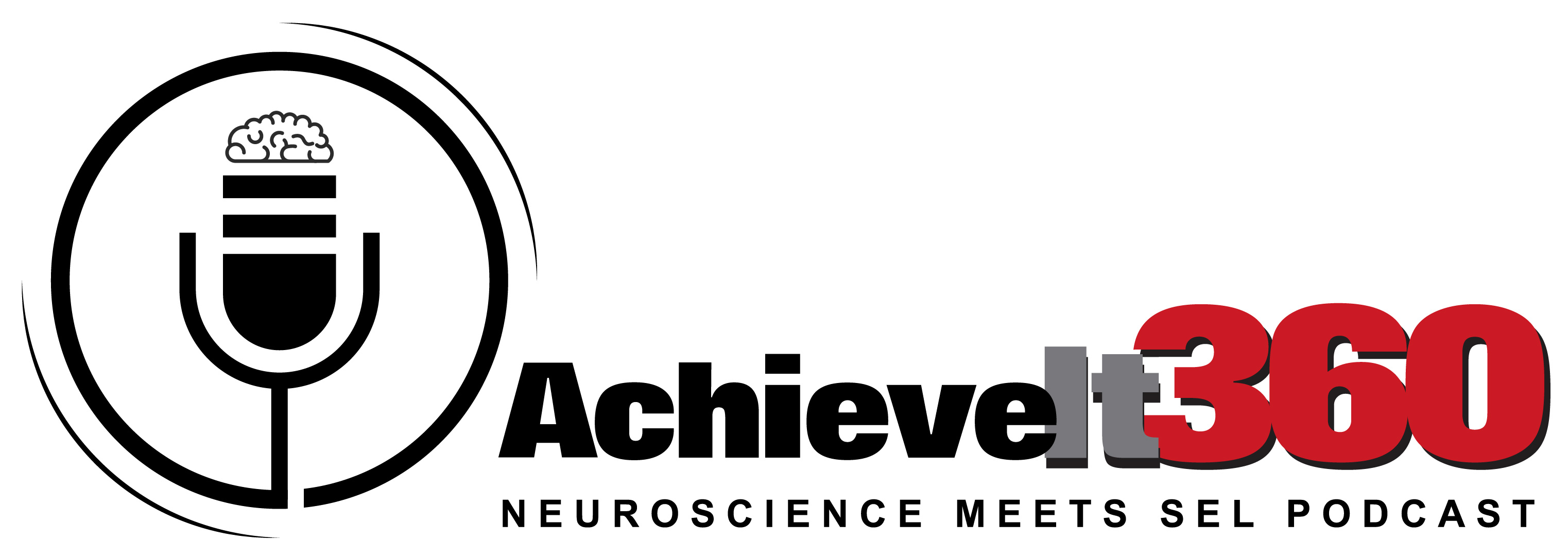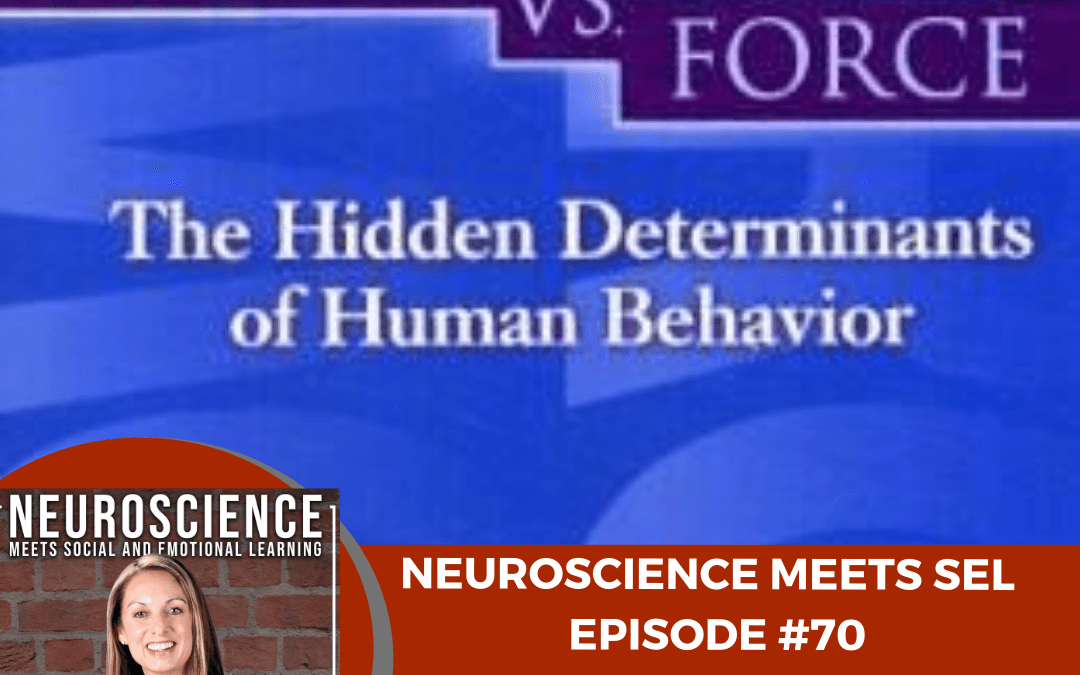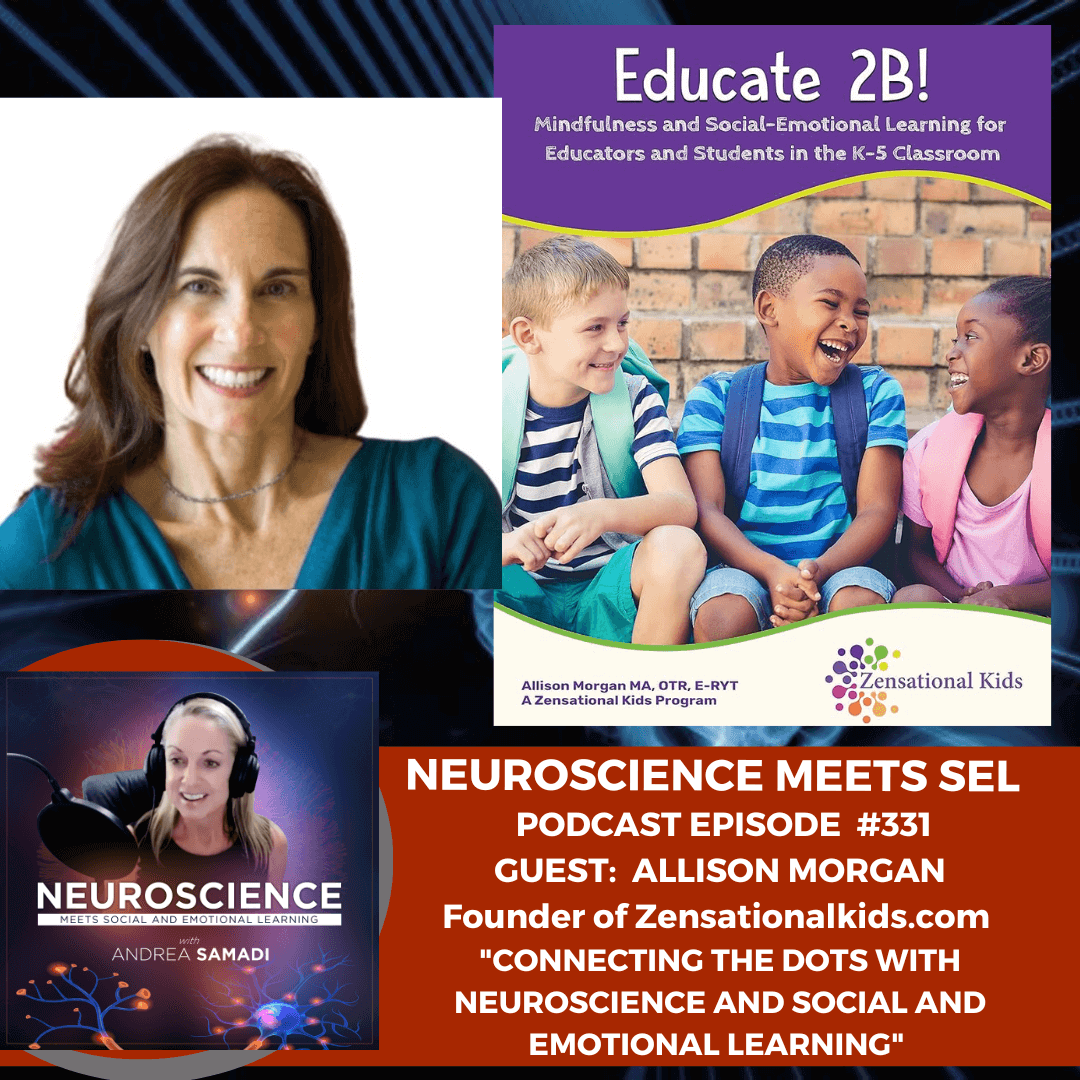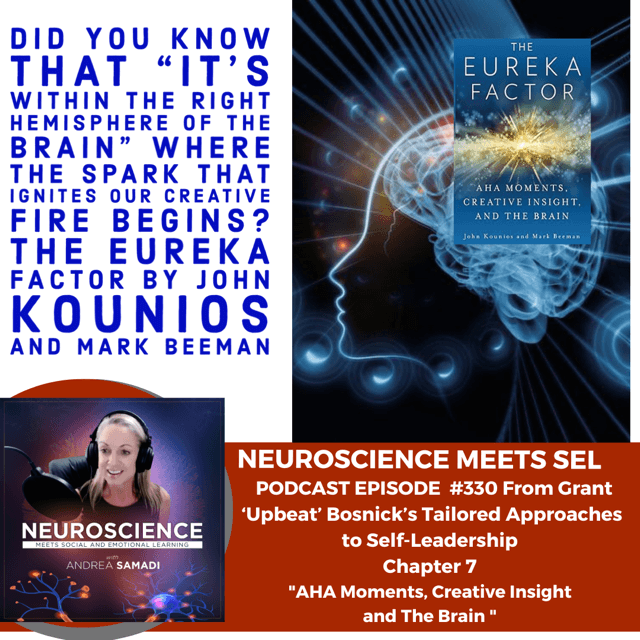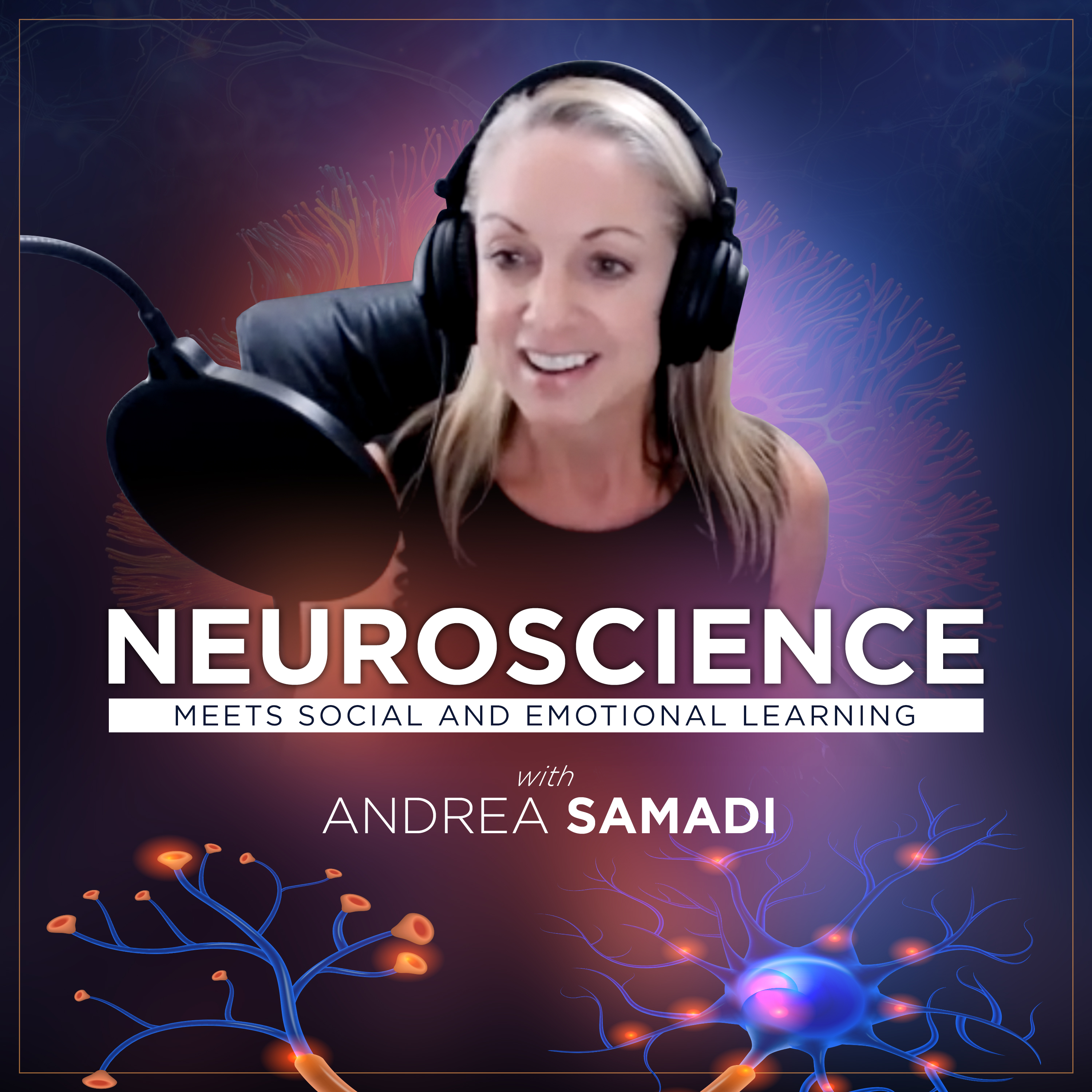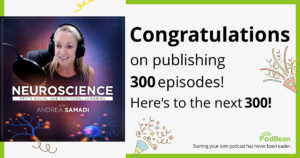Welcome back to the Neuroscience Meets Social and Emotional Learning podcast, episode #70 Applying Self-Regulation to Move to Higher Levels of Consciousness and Results with David R. Hawkins’ Power vs Force book to analyze the hidden determinants of human behavior.
My name is Andrea Samadi, and if you are new here, I’m a former educator who created this podcast to bring the most current neuroscience research, along with high performing experts who have risen to the top of their field with specific strategies or ideas that you can implement immediately, to take your results to the next level.
Today we are going to take a closer look at Human Behavior. The past 4 episodes have touched on identifying paradigms or habits that we want to change, with some ideas on how to change them with episode #67 with a Deep Dive into the Most Important Lessons I Learned from Bob Proctor’s Seminars[i] and episode #68 The Neuroscience of Personal Change, with a Deep Dive into Dr. Stephen Covey’s 7 Habits of Highly Effective People[ii]. I have received the most feedback about these 2 episodes, out of all the episodes we’ve done in the past year, so thank you for everyone who listened sent me messages about what you learned from the awareness and application of these 2 episodes. When writing these lessons, they often take many different turns and directions and you never know how they will turn out. I’m so glad to hear they have been helpful.
I know that we can still go a bit deeper into looking at human behavior, with some serious introspection, that will improve our self-awareness, as we take serious inventory of what’s working in our life, and what’s not working. When I first heard the term “paradigm” when I worked with Bob Proctor in the late 1990s, it took me a few years to understand what he was talking about. Then it took me many more years to figure out what paradigms weren’t serving me. Then, after writing them down, and staring at them, it took me a few more years to decide I was going to change a couple of them at a time. We all have paradigms that are working for us—so we will want to keep those and be aware of the ones that are preventing us from reaching those higher levels of achievement.
If you want to identify your paradigms (positive and negative ones): take out a piece of paper and write out all of the behaviors that you do habitually. You will be able to identify your habits that are working for you (they’ll be the ones helping you to produce better results in your life) and the ones that are not working for you (the ones that hold you back). Circle the habits that are NOT working for you and pick one or two that you want to change. I suggest reviewing episode #35 How to Use Your Brain to Break Bad Habits[iii] as I go into detail here on how to substitute bad habits for more productive ones, with brain science in mind. For the next 90 days, you focus on changing just one habit, and this will take discipline. It will take the ability for you to give yourself a command and follow it. For example: I am going to switch this habit for a new one—like maybe you want to stop drinking coffee, so you substitute coffee for hot lemon water in the morning instead. If you really want to stop the old habit, you will be ready to make this switch. I want to give a shout out here to Mandy Krueckeberg, a social worker who follows this podcast. I recently saw her post on her FB that she was on day 1 of cutting out coffee in her diet, and she did it by replacing the habit she wanted to change (coffee) with something that made her feel better (by drinking cinnamon tea). When I was writing this episode, she was on day 3 of this habit change and the longer she keeps this up, the more likely it will be that this habit change will be a success as her brain will lock into the new neural pathway she’s creating. She applied discipline to achieve the results she was looking for. Awesome work Mandy! There are also tools that you can use to log the days that you are successful with your habit change. I use the 100 days to habit worksheet[iv] to cross off my successful days, and notice when I go off track, so that I can get myself back on track.
But what happens if you really want to change a behavior, and you try, and just can’t? If you have put all of your effort into change, and are still struggling, I suggest reading John Norcross’s book Changeology: 5 Steps to Realizing Your Goals and Resolutions[v] because millions of people around the world have met with success through his plan. If you are still not having success with changing a behavior, and just can’t stop the habit for 2 weeks on your own (after 2 weeks you should lose interest in the habit) then we are crossing into the field of addiction, where I’m not an expert, but there are entire podcasts based on this topic that you can tune into. Since human behavior is predictable, and addiction is not difficult to miss, it’s just difficult to acknowledge and take the steps to change. This current Corona Virus time will magnify something like this as there is nowhere to hide while we are all on quarantine. People with addiction can be extremely high functioning like we have seen with celebrities who have to go through their challenges in the public eye. It is very clear that the first lesson here is that we can’t change other people’s behaviors since all of our brains are wired differently. We can only change our own habits, but we can gain understanding and awareness that can help point others and ourselves towards finding our own way.
But how do we know if we have an addiction and need more specialized help? This will be apparent if you cannot stop the habit that you want to stop on your own and the habit is preventing you from reaching your highest levels of achievement. If there is something you are doing that is giving you poor results and you keep doing it anyway, you will know what it is. There will be no question in your mind, but the key will be when you decide to do something about it.
On July 4th, I was fortunate to be near my favorite mountain in the Phoenix area and hiking this mountain is always at the top of my agenda. When I was starting out, it was still dark, around 4am, and I noticed a large group of men in a circle, prepping for their hike. I couldn’t really see anything except for their silhouettes against the rocks, but I could tell these guys all looked like they were in shape, and I was guessing they were a sports team, meeting for some sort of training, the way they were interacting. They said some sort of prayer or something before they started, and then they all took off like a rocket. For this hike, the starting stretch is the most difficult. These guys left me in the dust, and I asked 2 guys near me “Are you all a part of sports team?” and they replied, “kind of, we are all recently out of a rehab program.” This made sense to me now, as this mountain will open your eyes to how you are showing up in life. If you aren’t sleeping well, you will fade at the beginning. If you haven’t been treating your body well, it will be a rough hike. After the first few hills, you see it all the time, the ones who are being good to their bodies will keep their pace, and the rest will fall behind. On my way down, I passed the guys who I spoke with at the start—they started out strong, and now they looked like they were about to die. I asked “hey, what happened?” I had already seen the rest of their team celebrating at the top and these guys were nowhere near the finish line. They both looked at me, then looked down to the ground and said “well, smoking a pack and a half of cigarettes a day is going to need to stop.” The mountain never lies. Either do the stairs when the elevator is broken. We all know the bad habits that interfere with our daily life, just like these 2 guys knew that it was smoking that prevented them from staying with the rest of their team. Self-awareness is the key, but sometimes it takes something like this to kick us into a higher gear to do something about this awareness.
Another helpful tool is David R. Hawkins’s book Power vs Force: The Hidden Determinants of Human Behavior.[vi] This book taught me more about human behavior and why people do what they do, than anything I had ever heard before, that it wasn’t surprising that Dr. Wayne Dyer said this book was “perhaps the most important and significant book (he had ever) read.”
This book has helped many people with addiction to get to the root cause of it. If you ask any addict about their behavior, and they are at the point where they are not hiding it anymore, they will talk about the shame and guilt they feel about it. They want to break the cycle. So, this is their work, to heal their past, and move upwards on the map of consciousness. I’ve provided this map in the show notes that David Hawkins created to show that different emotions we have are like radio stations or frequencies and when we are tuned into a certain emotion, or level, we are thinking thoughts at this level, and operating from this level. Any emotion at the level of 200 and above (Courage, Willingness, Acceptance) are constructive expressions of power, showing us that true power comes from within, while the lower frequencies, anything under 200, he explains are destructive for the individual and society. Think about people in a position of leadership. True leaders know they cannot apply force to get their team to do the things they want them to do. True leaders inspire loyalty, not fear, using the higher levels of the map of consciousness.
It’s interesting to look at where anger sits on this chart since we might think that anger is a destructive emotion, but it’s quite a way up from guilt or shame. If you are in a place of leadership, you can use this map to predict human behavior and this can be very helpful. You can use these ideas to walk into a room and assess where the people you are leading are operating from, without being judgmental. If someone is angry about something, there’s no need for you to react to this person and get upset about their anger, you just need to find a way to encourage them to move them up the scale perhaps by talking to them, and looking for a solution to what they might be angry about. This map can really help you to become more self-aware, have more belief in yourself and your own abilities, to help you to understand others and you will want to inspire people with your example, which is to by using power, never force.
Take a look at where you sit on this map and strive for higher levels of consciousness with self-regulation techniques.
Neuroscientist, Stefanie Faye, from episode #39 Using Neuroscience to Improve our Mindset, Self-Regulation and Awareness[vii] just recorded a podcast called Mindset, Micro Movements and Super Regulators[viii] where she talks about how we can become better at self-regulating to move up this map of consciousness intentionally. Regulation, Stefanie explains is “everything that we do to feel better” and this is relative to each person. She explains that “there are two types of self-regulation: conditional self-regulation (bottom up) where we use television or our phones or something from the outside to regulate, or top down, unconditional, where we use our mind and body to access a sense of inner well-being like through meditation, focused awareness or visualization.
We can also co-regulate with our connection to others—conditional, which would happen when we are physically present, or unconditional, by using visualization where we can draw people up in our mind for a regulating effect. We are not born with this ability, so we must learn how to do this.
Some people, she calls super regulators, have become really good at this skill and can help others to climb up the scale to “self-regulate, co-regulate and access a higher awareness of their own possibility for well-being, growth and evolution.” People in leadership roles should develop the skill of a super regulator as they can model the way for other people to improve this use of their Prefrontal Cortex (thinking, decision-making part of their brain) but they will need to be aware of what they are doing. Since humans are the only species who have this ability, we must model for others to keep building a better brain and life and help others to reach up the scale of human consciousness. Stefanie does have a Masterclass on developing the skills to be a Super Regulator[ix] where you can learn specific strategies to gain a sense of power with your well-being by using biological signals in your body to help you to solve problems you might be facing.
A fascinating part of her podcast, she talks about habit breaking, to improve our results and takes it a step deeper when you add in her knowledge of the brain to this practice. Think back to where I had you write out all of your habits on a piece of paper and circle the negative habits you want to break. Now, go back to the habits you want to break and write out the micro movement that you take BEFORE doing the habit. For someone who wants to break the habit of drinking coffee, the micromovement would be grabbing the hot cup of coffee and smelling the coffee beans before you take a sip. Take a minute to identify the micromovements involved in each of the habits you want to change. There is muscle memory involved here, so to break the habit, we will need to be aware of and break the micromovement by doing something different. Instead of reaching for whatever it is that you reach for to feel better, break it up and go for a walk instead. Take a brain pause, think, slow things down and be intentional about the new habit that you want to create. The more we can slow things down, the better we will become at breaking our habit loops.
We’ll meet with success when we are able to practice giving the brain what it wants. Our brains seek novelty, and this new level of awareness will propel us forward and up the scale of consciousness where our results will be heightened. When looking for solutions to feel better, Stefanie Faye suggests to “find the answers from within your own body” with this new sense of awareness. Learn to tune into yourself, build up your self-awareness, and practice listening to what you might be thinking or feeling to break the habit loop of mindlessly staring at your phone, or whatever strategy of escape you are using. With practice, we can all take the steps to connect with ourselves mindfully, take a pause, and rise up the levels of David Hawkin’s Map of Consciousness where our results will soar.
Just a quick review:
- To identify your habits or paradigms, whether positive, or negative, take out a piece of paper and write out all of the things you do habitually.Circle the habits that hold you back from accomplishing your goals.Write out the micro-movement that you take before you do this habit.Pause the next time you want to repeat the bad habit.To change this habit, you will want to replace the bad habit with something new, something positive, that doesn’t hold you back from the results you want to attain.Watch yourself rise up David Hawkin’s map of consciousness when you are able to practice self-regulation.If you want to help others to regulate, you can learn more about begin a super regulator from Stefanie Faye’s Masterclass.Practice being “kind and forgiving to everything and everyone, including yourself, at all times, without exception” and strive for the power emotions that are at 200 and above (Courage) vs the destructive emotions (below 200). (Power vs Force)
I hope you have enjoyed this episode and that these episodes are helping you to think differently about yourself (the social and emotional side of you) with your brain in mind (the cognitive side). Once you have these new insights and have opened up your awareness, you’ll want to take action on the ideas that come to your mind. It’s the action, integrating these ideas into your behavior, that will change the results in your life.
REFERENCES:
[i] EPISODE #67 of the Neuroscience Meets SEL Podcast “Expanding Your Awareness with a Deep Dive into Bob Proctor’s Most Powerful Seminars” https://www.achieveit360.com/expanding-your-awareness-with-a-deep-dive-into-bob-proctors-most-powerful-seminars/
[ii] EPISODE #68 The Neuroscience of Personal Change with a Deep Dive in Dr. Stephen Covey’s 7 Habits of Highly Effective People https://www.achieveit360.com/the-neuroscience-of-personal-change/
[iii] EPISODE #35 How to Use Your Brain to Break Bad Habits https://www.achieveit360.com/how-to-use-your-brain-to-break-bad-habits-in-2020/
[iv] 100 Days to Habit Worksheet https://www.pinterest.com/pin/20688479525068962/
[v] John C Norcross Changeology http://www.changeologybook.com/
[vi] David R. Hawkins, M.D. Ph.D. Power vs Force: The Hidden Determinants of Human Behavior. https://www.amazon.com/Power-Force-David-Hawkins-M-D/dp/1401945074
[vii] EPISODE #39 Stefanie Faye on “Using Neuroscience to Improve Our Mindset, Self-Regulation and Self-Awareness” https://www.achieveit360.com/neuroscience-researcher-stefanie-faye-on-using-neuroscience-to-improve-our-mindset-self-regulation-and-self-awareness/
[viii] Mindset, Micro Movements and Super Regulators Stefanie Faye on the Girl on Fire Podcast http://stefaniefayefrank.com/articles/mindset-micro-movements-and-super-regulators-my-interview-with-girl-on-fire-host-kirsten-franklin/
[ix] Super Regulator Masterclass http://stefaniefayefrank.com/master-class/
Podcast: Play in new window | Download
Subscribe: Apple Podcasts | RSS
